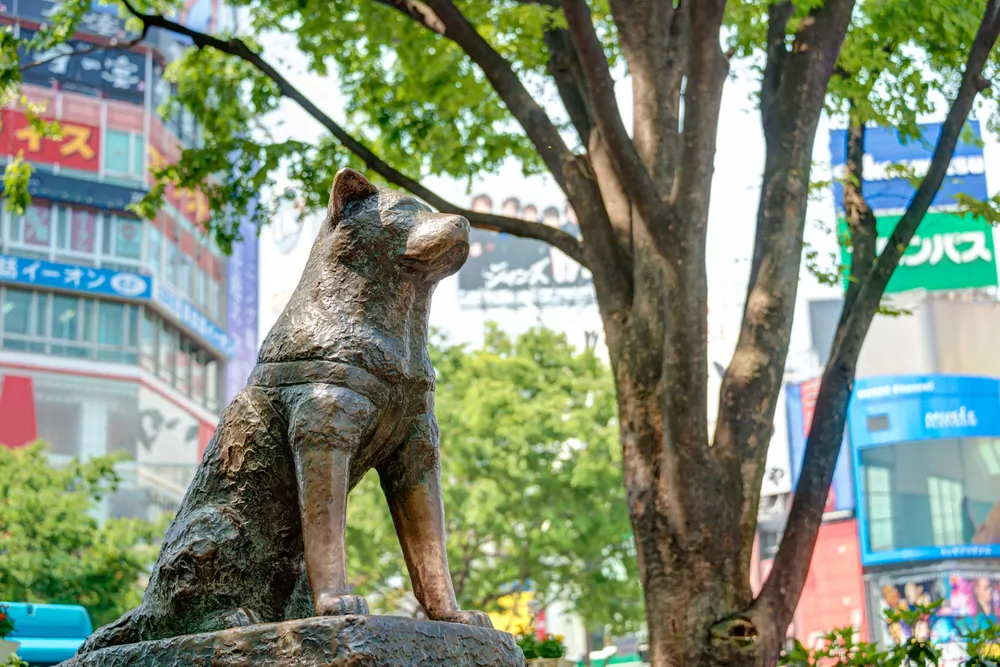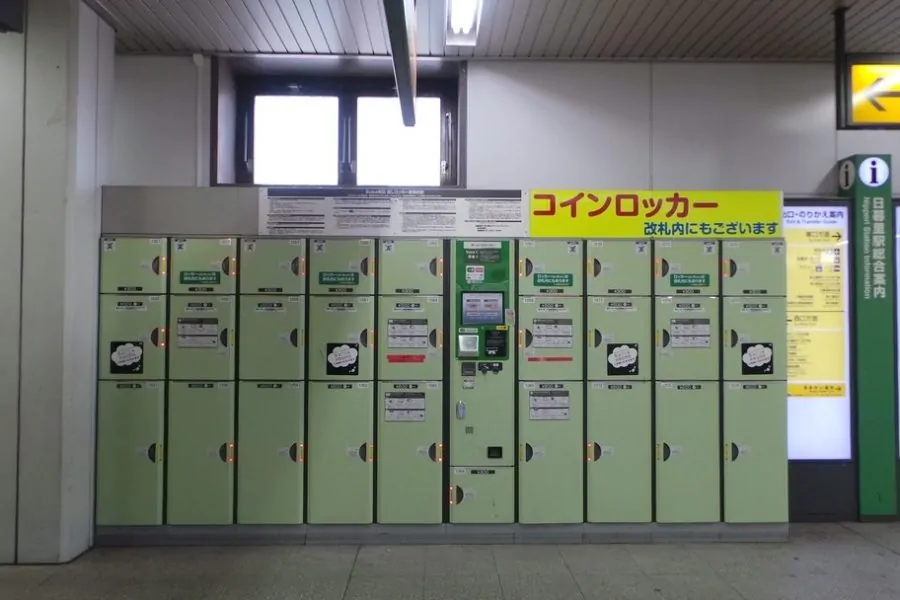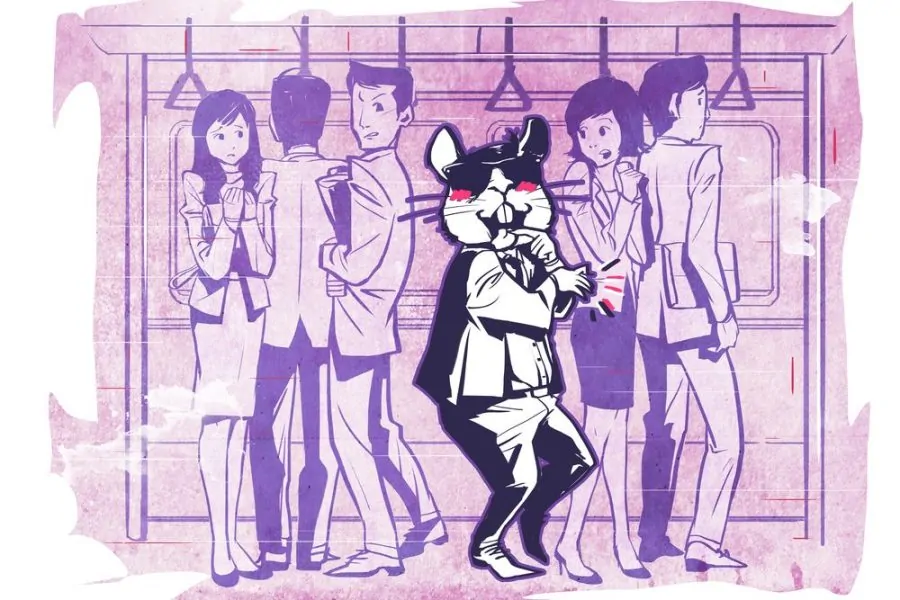Hachiko is likely Japan’s most famous dog, even though he lived almost a century ago! The tale of an Akita so loyal to his master that he continued waiting for him even after the latter’s death has captivated people worldwide.
This loyal pup has many tourist sites devoted to him. But why is he so famous, and how can you visit him on your Tokyo vacation?
The History of the Akita in Japanese Culture
Hachiko’s story helped to popularize the Akita breed worldwide, but it had already been a part of Japanese history for centuries. The dog is named after the mountainous, wild Akita prefecture where the dog was originally bred.
Akitas were bred to hunt elks, wild boars, and brown bears. They also served as companions for samurai until the end of the samurai class in the 1870s.
Akitas are incredibly territorial and slow to warm up to new people. They’re also very meticulous and may clean their faces after eating or be particular about their sleeping spaces. Despite that, the breed is warm and affectionate with its owners and often very good with children.
In 1931, the breed was officially designated as a Japanese natural monument, and the first breed standard was revealed in 1934.
Hachiko’s story came around at just the right time to provide buzz for the Akita breed and serve as cultural diplomacy for a country preparing for war.
Hachiko’s Story
Hachiko was born on a farm outside of Odate, Akita prefecture, in 1923. In 1924, Hidesaburo Ueno’s owner brought the dog to live with him in Tokyo, where Ueno was an agricultural professor at Imperial University (now the University of Tokyo).
Ueno’s Tokyo home was in the Shibuya ward. Hachiko would walk to the Shibuya train station every working day to collect his master and accompany him on the walk back home.
Sadly, this heartwarming display of interspecies companionship wouldn’t last long. Ueno died of a cerebral hemorrhage during a May 10, 1925 lecture. He wouldn’t meet Hachiko for the daily walk home from the train station.
Still, Hachiko would come to the station every evening at the same time to wait for Ueno. They had attracted a bit of attention among commuters while Ueno was still alive, and people became more curious after they noticed the dog was still there on his own.
One of those curious onlookers was a former student of Ueno’s, Kozaburo Kobayashi. Kobayashi was studying the Akita dog breed and realized Hachiko was one of only 30 purebred Akitas left in the country.
In 1932, after Hachiko had kept his vigil for seven years, the newspaper Asahi Shimbun published one of Kobayashi’s articles. After that, commuters and others came to the station to give Hachiko treats and food and meet this most loyal dog.
Hachiko mania swept the nation. It was a feel-good story showcasing the Akita as a genuinely exceptional and uniquely Japanese dog breed.
Hachiko passed away on March 5, 1935. The cause of death was likely cancer, possibly complicated by a heartworm infection. Train employees and Hachiko’s mistress held a vigil around his body at the station.
The First Hachiko Statue
The first monument to Hachiko was built while the subject was still alive. Sculptor Teru Ando erected the bronze statue at Shibuya station, and the pup himself was present at the unveiling in 1934.
The statue simply depicted the dog seated. The first anniversary of Hachiko’s death in 1936 was honored with many Tokyo residents visiting the statue and leaving food, flowers, and other offerings.
Unfortunately, the statue didn’t last very long. It was recycled during WWII when Japan had already lost some of its colonies and desperately needed metal. The statue is rumored to have become part of a train engine.
After WWII, Japan was economically devasted and trying desperately to rebuild. With so many other pressing issues, Hachiko was at risk of being forgotten.
The Current Statue
Thankfully, after the war, there was a push to re-erect the statue at Shibuya station. Takeshi Ando, the son of the original sculptor, unveiled the new piece in August 1948.
The current statue looks much like the original, with Hachiko simply seated and waiting for his master to arrive. This statue didn’t take long to attract the world’s attention, either. Helen Keller famously visited and touched the monument when she toured Japan in 1948.
Today, the statue is a popular meeting spot, and the entrance closest to the statue is referred to as “Hachiko-guchi,” or “Hachiko entrance.”
How to Visit Hachiko
Finding the Hachiko statue is easy, even if your Japanese isn’t the best. Catch the subway to JR Shibuya station on the Yamanote Line and follow the signs (many of which have English translations) to the Hachiko exit.
If you’re having trouble, look down! There’s a path of paw prints to help guide you. You’ll find the statue of Hachiko just outside in the square and close to the road.
Be ready, though. The statue being a popular meeting spot means it’s often swamped with locals and tourists. If you want to see the monument with fewer people around, try hitting it early in the morning.
Keep an eye out for other little tributes to Hachiko around the station, too. There are manhole covers and a lovely mural just outside. The Hachiko Bus, painted with cartoon pictures of him, departs from just behind the dog statue.
Other Hachiko Sites
The Shibuya station Hachiko statue is by far the most famous. But it’s definitely not the only one!
Take a look at these other sites for more chances to get up close with the world’s most famous Akita.
The Happy Hachiko Statue
The newest addition to this list, this statue, was unveiled in 2015. It’s on the University of Tokyo campus in Bunkyo City, where Ueno used to teach.
This statue shows a happy Hachiko leaping up to meet his master, who holds him by one of his front paws. It’s as if he’s meeting him after work again.
The campus is easy for visitors to access. Take the subway to Todaimae station and walk a little south to the university’s Nou Seimon entrance. The statue is easily found once you get inside.
The university campus is covered in trees and plants, so it’s a beautiful place to visit, even apart from the Hachiko statue. It’s also near the Tokyo National Museum and the National Museum of Nature and Science (which does have a Hachiko exhibit – see more on that below), so it’s easy to fit a visit to Happy Hachiko into your tourist jaunts.
Hachiko’s Grave
Hachiko is buried with his master Ueno and Ueno’s long-term partner Yaeko Sakano. Sakano was also a big part of Hachiko’s life, especially after Ueno’s death.
Their graves are in the Aoyama Cemetery in the Minamiaoyama district, right next door to Shibuya. The nearest subway stations are Nogizaka and Gainmae.
Once you get to the cemetery, you’ll see Hachiko’s grave marked, in English, on Google Maps. It’s right near the entrance, and a makeshift shrine erected for Hachiko will have dog treats, food, and other offerings.
Many other famous Japanese people are buried at Aoyama, including military figures, Kabuki actors, and writers. There’s also a gaikokujin bochi (foreigner’s cemetery) that holds many western missionaries and doctors who died during the turn of the 20th century.
Definitely stop at the cemetery if it’s Sakura season; there are plenty of stunning cherry trees to enjoy!
Other Tokyo Sites
There have been several other statues of Hachiko in the Shibuya district. They frequently pop up and disappear, so keep your eyes peeled while walking around or ask a local if you want to try out your Japanese.
There’s a Hachiko exhibit of sorts at the National Museum of Nature and Science. It’s certainly not a visit for everyone, but it’s a must for the Hachiko completist. His pelt was taken off before cremation and transformed into taxidermy for display.
If you’re in Tokyo on March 8, be sure to check out the Shibuya statue for Hachiko’s official Ceremony Day. The statue is frequently dressed up, visitors bring flowers, and speeches praise Hachiko for his devotion and loyalty.
Sites in Odate
While Hachiko lived most of his life in Tokyo, his birthplace is Odate, a city in the far north of Honshu in Akita prefecture. It’s about five hours north of Tokyo via the bullet train, so any trip there will likely take at least two days.
There are many additional Hachiko statues, plus a museum dedicated to the Akita breed.
Odate may be worth visiting if you’re interested in visiting nature while in Japan. You can see the Nagabashiri Wind Caves, hike up Mt. Tashiro, or check out the Odate rose garden.
The Movie on Hachiko’s story
Hachi: A Dog’s Tale (Hachiko Monogatari) is a 2009 American drama movie based on the true story of an Akita dog named Hachiko. It follows the Japanese tale of the loyal pup who waits for his master daily at the train station, even after his death. The movie stars Richard Gere as Professor Parker Wilson, who finds the puppy at a train station and takes him home.
Hachiko: A Legend of Loyalty
The Hachiko story is a massive part of Japanese culture. The dog’s legendary loyalty reflects the broader Japanese values of dedication, perseverance, and selfless love for others.
No visit to Tokyo is complete without checking out at least one of the many Hachiko sites!





Leave a Comment